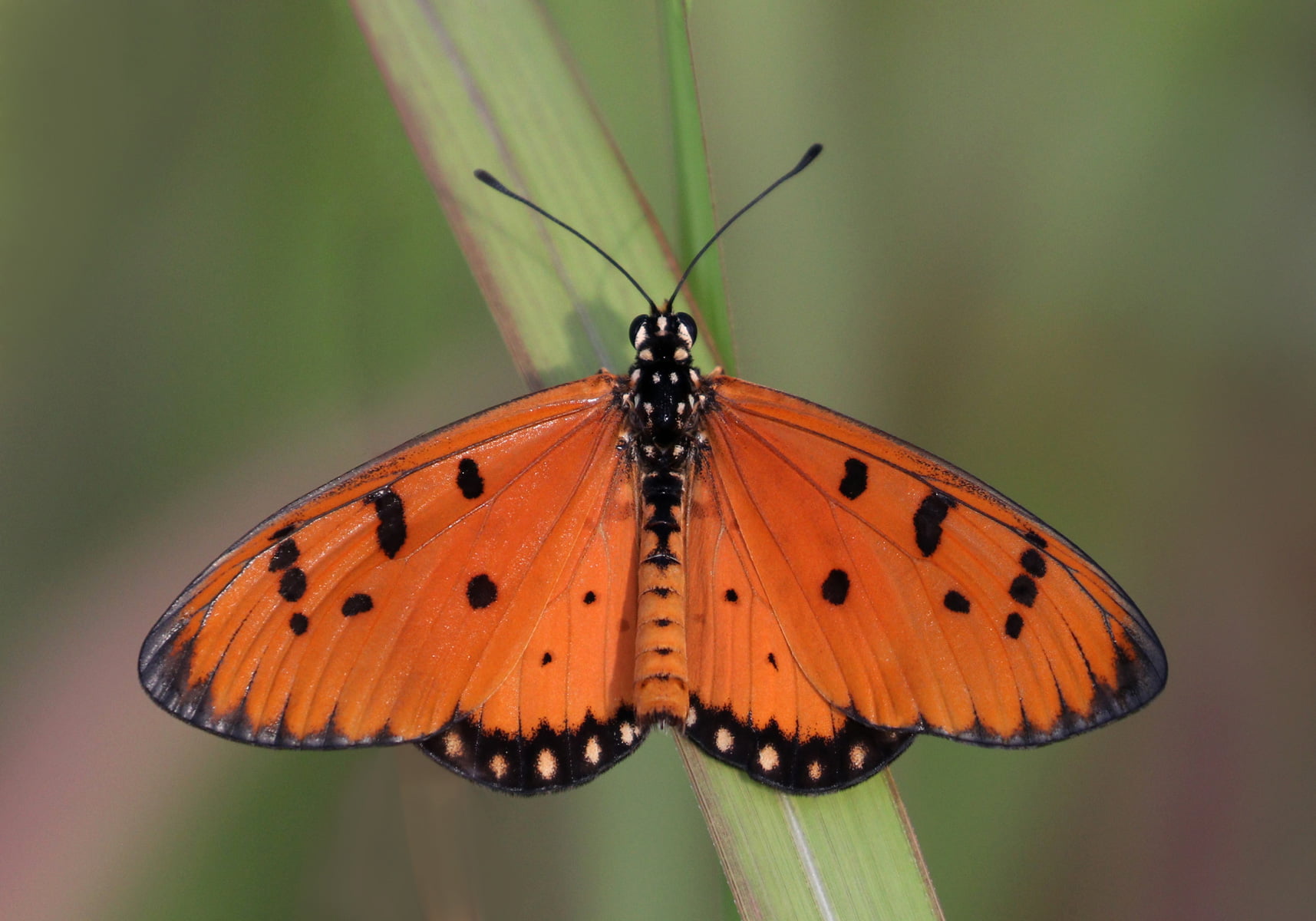Acraea violae has dark orange upperwings in males and brownish yellow in females. The forewings have two black spots across the cell, a wider spot in spaces 2 – 6 and 10, the costa edge and the termen are black. The hindwings have black spots on the cell, 4 – 5 black spots in the basal area, subcostal spots and a series of discal spots. The edge of the termen is bordered by a black line which has a series of small dots. The head is black with pale yellow and yellow spots, the antennae are black.
Larva: larvae of Acraea violae are cylindrical, yellowish brown in color, their bodies are covered with turbecles, each of which has a black setae. On the 2nd instar the caterpillar is orange brown and the setae are replaced by rows of black spines growing dorso-lateral.
Pupa: Acraea violae pupae are whitish in color with black bands on the dorso-lateral and orange spots laterally and ventral. The length of the pupa is about 19-21 mm.


